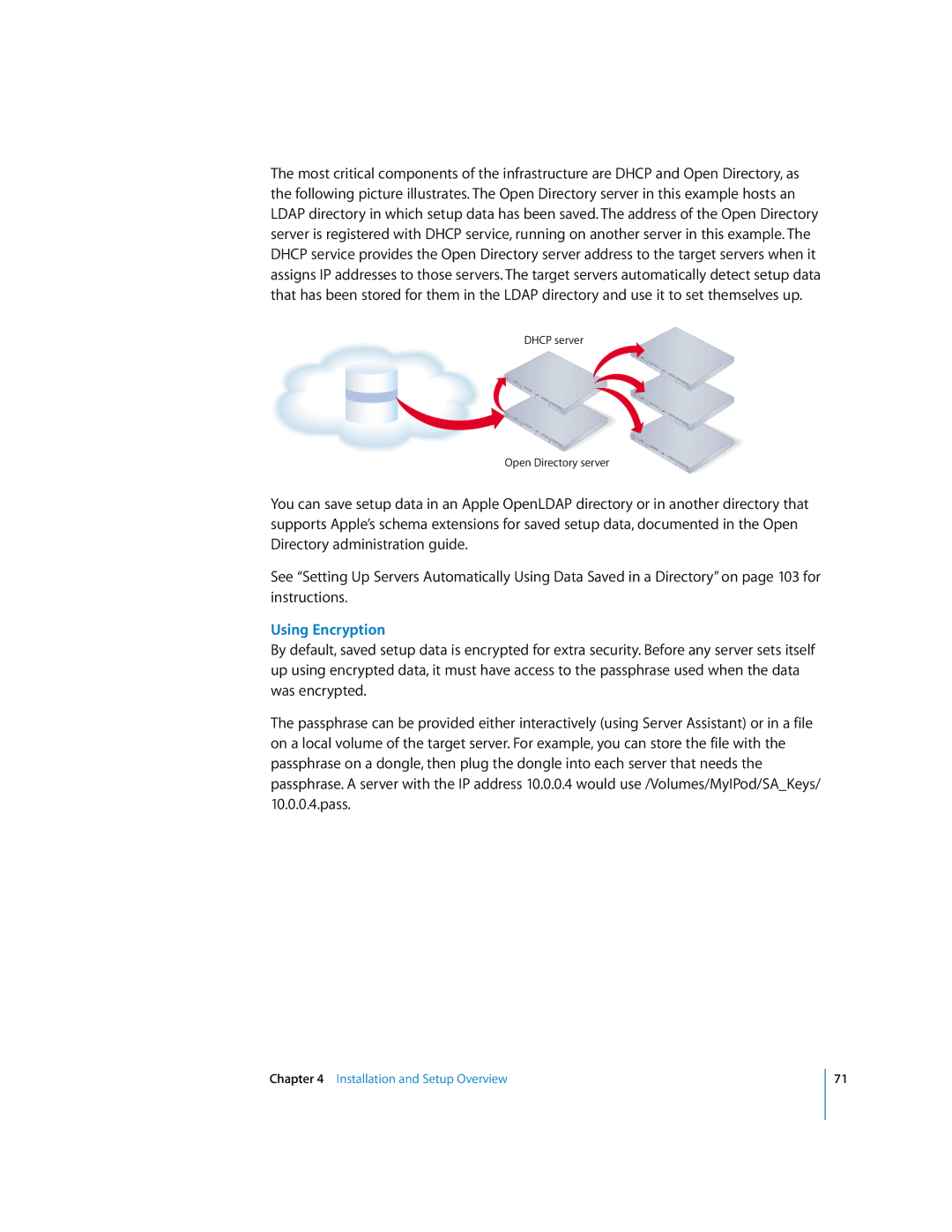
The most critical components of the infrastructure are DHCP and Open Directory, as the following picture illustrates. The Open Directory server in this example hosts an LDAP directory in which setup data has been saved. The address of the Open Directory server is registered with DHCP service, running on another server in this example. The DHCP service provides the Open Directory server address to the target servers when it assigns IP addresses to those servers. The target servers automatically detect setup data that has been stored for them in the LDAP directory and use it to set themselves up.
DHCP server
Open Directory server
You can save setup data in an Apple OpenLDAP directory or in another directory that supports Apple’s schema extensions for saved setup data, documented in the Open Directory administration guide.
See “Setting Up Servers Automatically Using Data Saved in a Directory” on page 103 for instructions.
Using Encryption
By default, saved setup data is encrypted for extra security. Before any server sets itself up using encrypted data, it must have access to the passphrase used when the data was encrypted.
The passphrase can be provided either interactively (using Server Assistant) or in a file on a local volume of the target server. For example, you can store the file with the passphrase on a dongle, then plug the dongle into each server that needs the passphrase. A server with the IP address 10.0.0.4 would use /Volumes/MyIPod/SA_Keys/ 10.0.0.4.pass.
Chapter 4 Installation and Setup Overview
71
